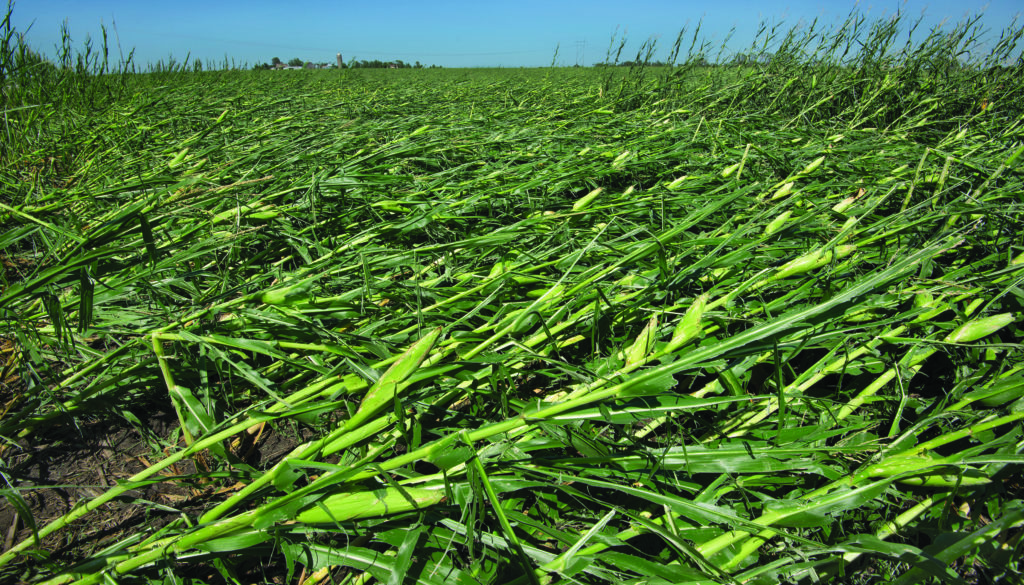By Jerry Hartsock & Dakota Miller
Cutting Edge Consulting
Early Harvest Benefits
The start of corn harvest looks very different for many operations. There are some that begin harvesting corn above 30% moisture, there are others who begin at 26-28%, another level is starting at around 20-24%, and then the majority begin when corn moisture reaches the teens. At Cutting Edge Consulting, we believe that there are significantly higher yields to be had if we start harvesting corn around 25-26% or higher moisture and then dry it down. As the corn dries down in the field, there is less yield to be had as a result of Phantom Yield Loss. Early harvest may require drying costs, but it pays off with upwards of 25 bushels/acre you can save by harvesting early compared to waiting for it to dry down to 15-18% in the field. Harvesting earlier also means getting in the field BEFORE field losses may occur (i.e. stalk rots or ears dropping). Getting into the field in mid-September allows for more timely fall tillage, soil sampling, fertilizing, etc. while microbes are also the most active.
With our thoughts about harvest in mind, we are challenging you to collect data and see early-harvest results on your farm. We want to push you to harvest a section of your field, that is not the end rows, when the moisture is higher than you would normally pursue (25-28% perhaps), then return to that field to harvest the section next to it at what you consider your normal harvest moisture. Share the results with us, so we can have more data about timely harvest!

Cornfields, like this one in Boone County, were flattened by the intense winds. In all, more than 6 million acres were damaged by the Aug. 10 storm. Photo courtesy of Gary Fandel, Iowa Farm Bureau.
Harvesting Down Corn with a Combine… UGH
With some of the severely damaged fields I have seen, harvest with a combine may not be possible or if so, it may have to occur ONE WAY. My worry there is the quality of grain and the greatly varying moisture contents and dockages/inability to store it if harvest is attempted. Hopefully, federal crop insurance with unharvestable ear coverage provides some relief. Those with less damage may find after-market heads perform better in adverse conditions such as the Drago or Geringhoff brands. An insurance adjuster will need to render a decision before you attempt to harvest if you have coverage.
Other factors to consider include:
- Corn this close to maturity with a large ear attached typically has a very difficult time standing back up
- Going after this crop early vs later is usually much preferred
- Volunteer corn in the 2021 crop could be a serious issue & may warrant rotation
Corn Rootworm Management

Adult rootworm beetles can eat corn leaves and silks, but damage begins at the roots during rootworm’s larval stage. Photo by Marlin E. Rice.
Late July and August is the time to survey your Corn Rootworm Beetle population. If you are checking continuous corn fields that had rootworm traited corn and DIDN’T have insecticide at planting time, I’m guessing your populations are much greater than if you had used Aztec, Force, Capture (Bifenthrin), etc.
Early root growth in most cases was not what it should have been either and along with that, the expression of the Rootworm trait appears to have been less than usual regardless of the trait sources. If an at-plant insecticide was applied, the number of beetles is low to slight. Goosenecked corn and firing of the lower leaves are two of the common symptoms of Rootworm damage and feeding. Western and Northern Rootworm Beetles are the species present this year.
Southern Rust Control Options

Southern corn rust pustules brought on by extended periods of heat and humidity are primarily found on the upper leaf surface.
Southern Rust is not difficult to control, it just typically comes on late in some growing seasons after most fungicides applied at VT/R1 have ran their course.
One option is applying ANOTHER fungicide over the top 21-24 days after the R1 application or when warranted, possibly use an economical curative such as Tilt, Folicur, Domark or their generic versions.
A second option is to for sure apply a product that has proven longevity that lasts more than others such as Trivapro, or possibly a couple of new products touting longer life as well like Veltyma or Miravis Neo.
A third option might be applying a V6-V8 application and follow that up with another application at R1+ to about when pollination has finished to have residual activity to mid/late August. Applying fungicide at brown silk or after dramatically decreases their effectiveness at reducing STRESS during a very critical/complicated time in a corn plant’s life, which is where the majority of the yield advantage comes from.
Late Season Structure/Integrity of Corn
Late season standability issues in corn usually sources from foliar diseases that destroy green leaf tissues or cause stalk/root rots. This year’s low/moderate levels of the typical foliar diseases of Gray Leaf Spot, minor levels of Northern Corn Leaf Blight, and the late infestations of Southern Rust should or hopefully will be much less severe than the pressure of previous years. But hold on… the second major reason for late season standability issues is macronutrient deficiencies of both Nitrogen (N) and Potassium (K). Both of these have routinely tested low/deficient on tissue tests this year. Be on the lookout for stalk quality and ear retention as we edge closer to harvest. Foliar fungicide applications made at R1 will greatly improve standability late in the season.
Enjoy the harvest!